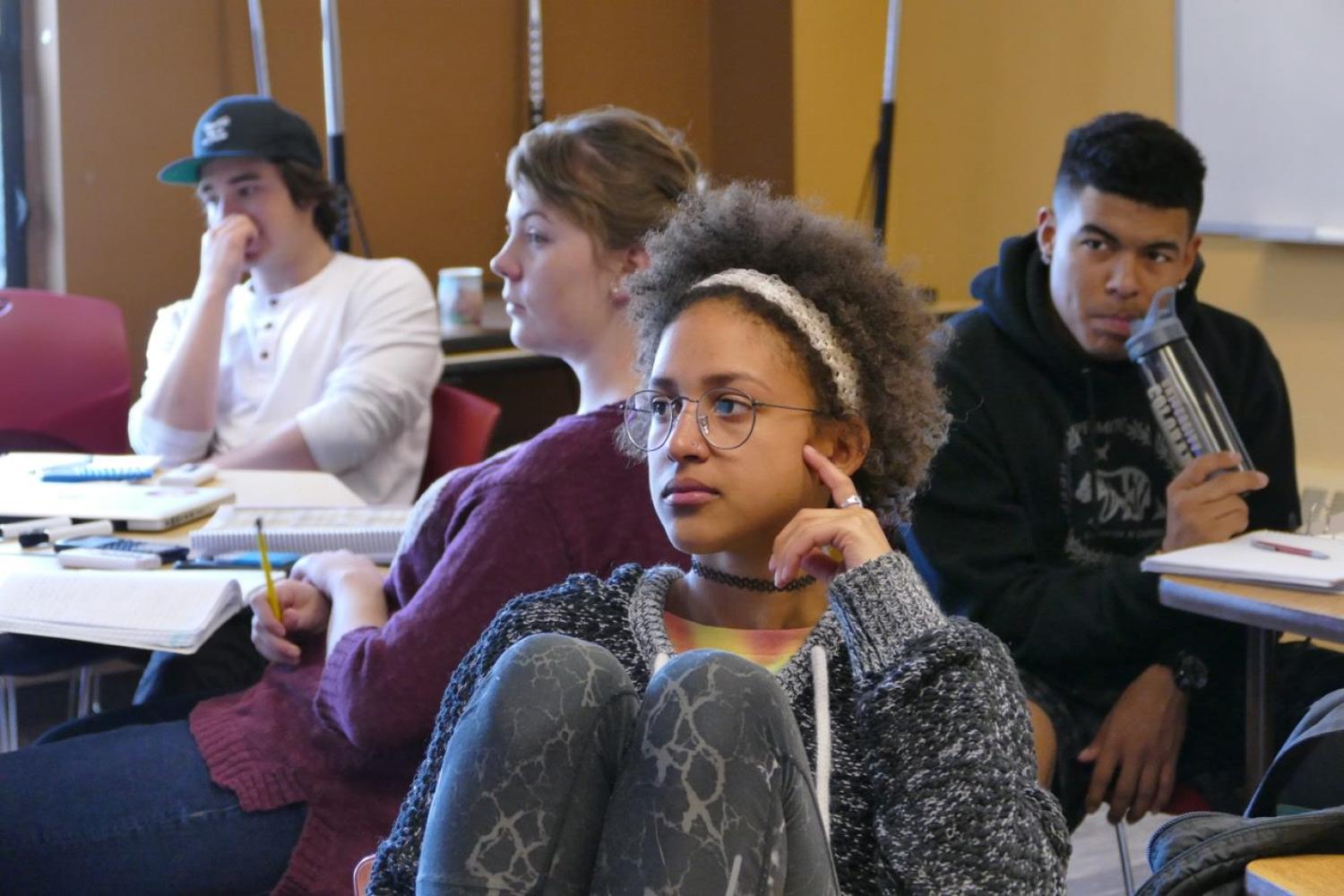Taking the temperature of your classroom
Image caption: Students studying chemistry in the Student Academic Success Center, an inclusive learning community that serves first-generation, under-resourced, and other underrepresented or non-traditional learners at CU Boulder.
In October, our campus is launching the 2021 Campus Culture Survey, which will allow students, staff, and faculty to anonymously share their experiences, providing insight as to whether they feel respected, supported, and valued in campus spaces and relationships. It is a valuable practice in the classroom as well, to pause in October and ask students about their experiences in your classroom. Mid-semester feedback can look very different from end-of-term evaluations, since students are able to see a definitive change based on their responses and instructors can seek clarification on confusing responses. I would like to offer some ideas on how to design questions to elicit constructive feedback from your students and how to respond quickly to that feedback.
Bringing a focus on equity-minded teaching allows one to take responsibility for the climate in their classroom by finding ways to powerfully acknowledge that students from different backgrounds will have varying needs and experiences in the same classroom. Asking questions that probe for a students’ sense of belonging in the classroom is referred to as “affective feedback”, which is distinct from cognitive feedback. As this Faculty Focus article notes, the students’ emotional experiences may be invisible to the instructor. Taking the temperature of the classroom mid-semester has two distinct benefits: there is time to adjust classroom practices to improve the classroom climate and learning experiences, and students are more likely to invest their energy in a classroom where they believe that their feedback is valued and can produce a change.
The survey will contain components for both cognitive and affective feedback. To allow students to honestly give effective feedback, the survey should be anonymous and all questions should be optional. You can use Google forms or other poll software to create the survey. Giving students time during class to complete the survey signals that the feedback is valuable to you. You could send out an email or Canvas announcement with the survey link to allow students who missed class a chance to respond.
Keep the survey short, with five to eight short answer questions at most. You might ask a teaching assistant or learning assistant to take the survey for you, to determine how long it will take and get feedback that the questions are clearly worded. Some example questions are included below. The last question on the survey could be “Is there anything else that you would like me to know about your experience in this class?”.
Large picture questions:
What has been most helpful for your learning in this class so far? What has caused you the most difficulty in this class so far? What are some concrete, practical things your instructor could change about this course in the remainder of the semester that would help you learn?
Cognitive feedback questions:
What concepts or ideas in this course do you feel you do not fully understand? Do the lectures help you learn? Why or why not? Do the class and/or online activities help you learn? Why or why not? What concepts or ideas in this course do you feel you do not fully understand?
Affective Feedback questions:
Do you feel comfortable sharing your opinions, questions, and ideas in this course? Why or why not? Do you feel comfortable asking questions in class? Why or why not? Describe how your classmates are contributing to or hindering your learning in this course.
Self reflection questions:
What is the one thing that you would personally do to enhance the learning experience in class? What could you do differently to improve your learning experience in this class?
Set aside time over the next few days to review the feedback. It can be tempting to fixate on a single comment, given the defensive reaction that naturally arises for all of us. Instead, look for broad patterns in the feedback. Design a short class presentation within a week of administering the survey to show these patterns to your students, and make sure to address both what is working for the class and what is not. Find concrete shifts to make, such as re-designing an assignment or assessment, adding in some community agreements for group work, or shifting the format of office hours to provide differentiated support. If you decide not to change a particular structure that students have asked to change, take time to explain your reasoning. Lastly, it is important to express gratitude to the students for giving you feedback on their experiences.
The Center for Teaching & Learning offers personalized consultations and we are happy to discuss the results of your mid-term feedback and how to make productive changes to your course structure. What does a teaching consultation involve? Learn more here!


